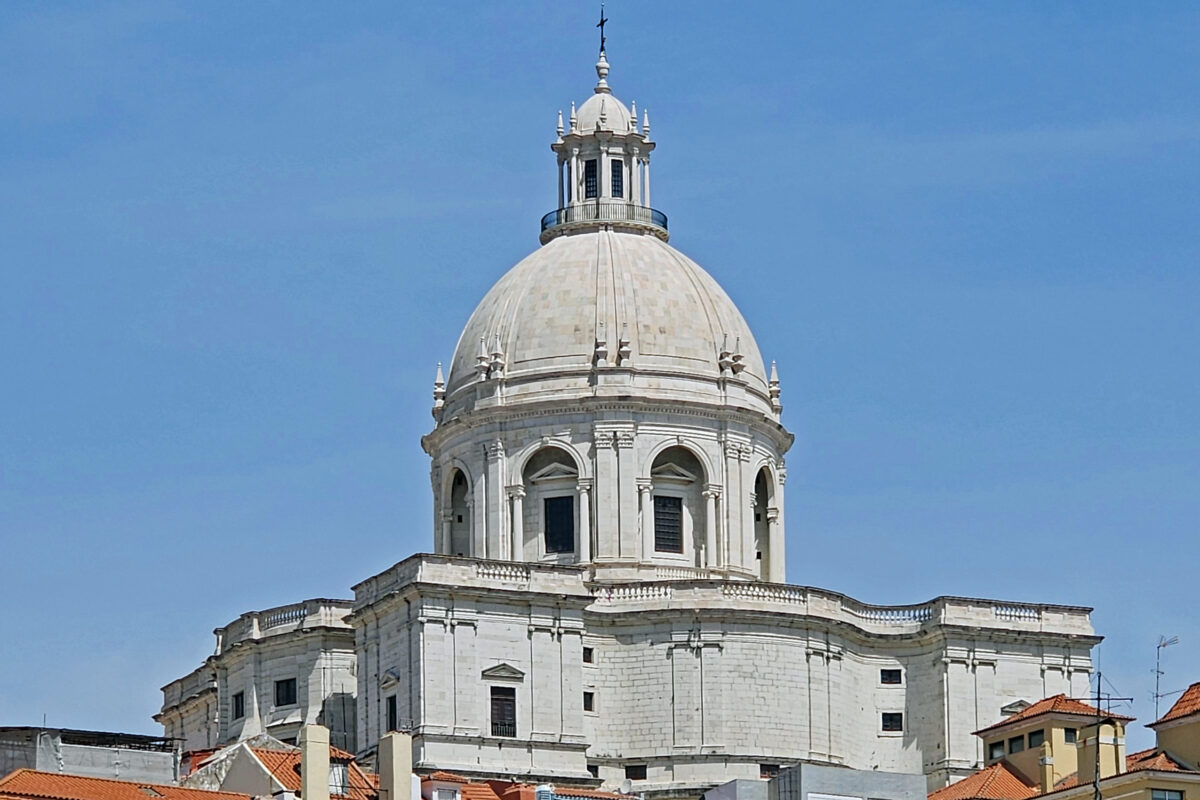By Alan K. Lee
My wife and I recently traveled to Portugal and the Andalusia region of Spain for the first time. We had been talking about going to Lisbon and the rest of Portugal someday for a long time and had started planning this trip in 2019. But the Covid-19 pandemic scuttled that plan, and all our travel plans. And when we did decide to travel again, in 2022 as the pandemic was winding down, we did a Danube River cruise instead of going to Portugal. But we didn’t write off Portugal, and we resurrected our old plan in 2023 and rescheduled it for this spring (2024).
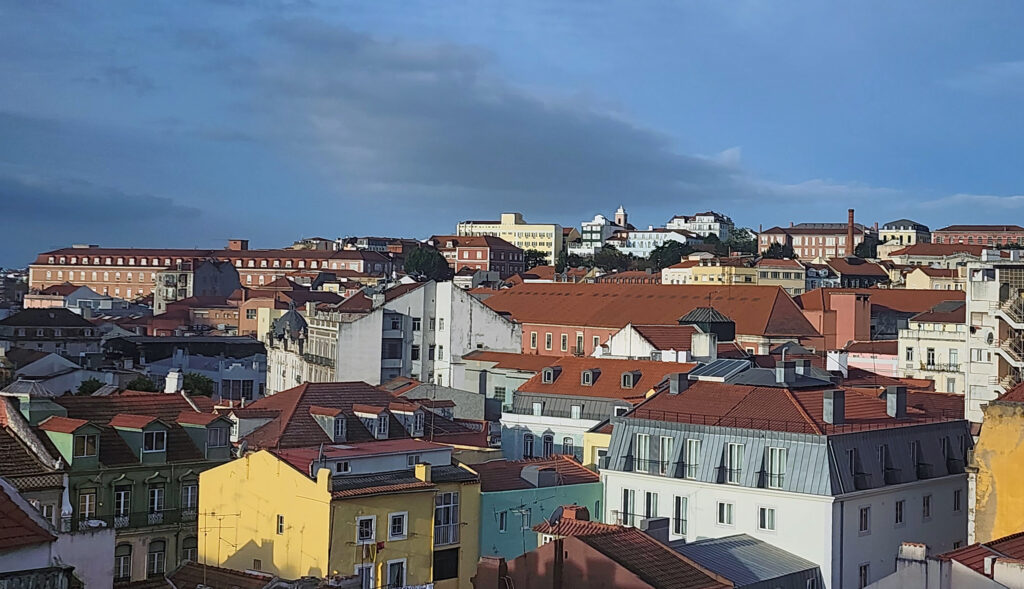
Lisbon was our first stop. We’d have been excited to finally set foot in Portugal, but after enduring a nine hour overnight flight from Portland to London, a two hour layover at Heathrow, a two hour delay after boarding our connecting flight while the flight crew and British Airways mechanics repaired the plane’s radio, and a two hour flight from London to Lisbon, we were too jet-lagged and sleep deprived to be excited about anything.
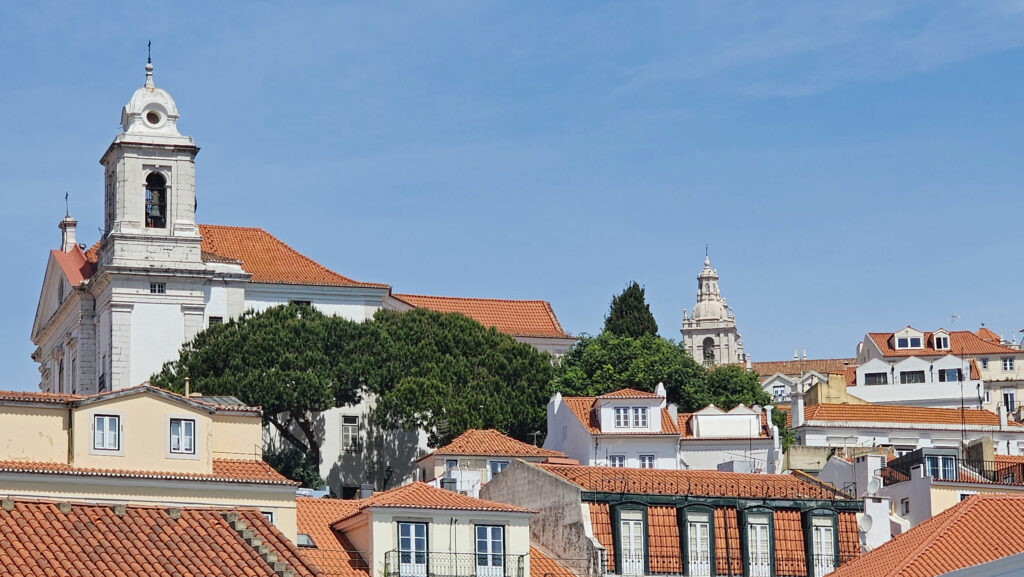
That all changed the next morning when we set out to explore Lisbon. We typically set aside one day at any new destination to just wander around, walk the streets, and see what we bump into. And that’s what we did on our first day in Lisbon.

Our hotel was about a half mile from Rossio Square, and that was our first stop that morning. Officially, it is King Pedro IV Square (Praca Dom Pedro IV), but everyone calls it Rossio. The square is paved with a distinctive wave-patterned tile. There are two large Baroque fountains at either end of the square and a statue of King Pedro IV set on the top of a nearly ninety-foot-tall column in the center of the square. Rossio Square has been the predominant site of city gatherings in Lisbon for centuries.
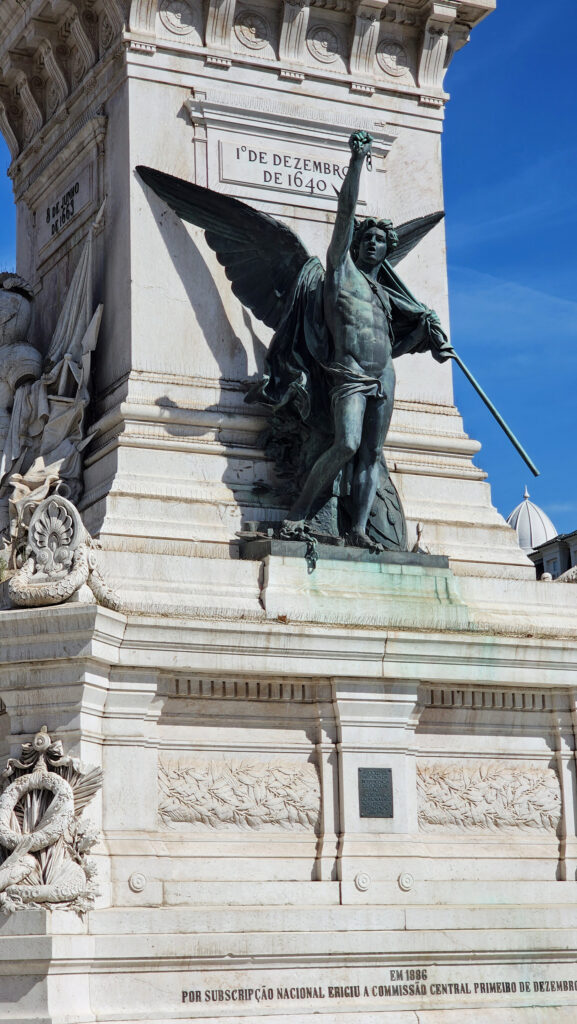
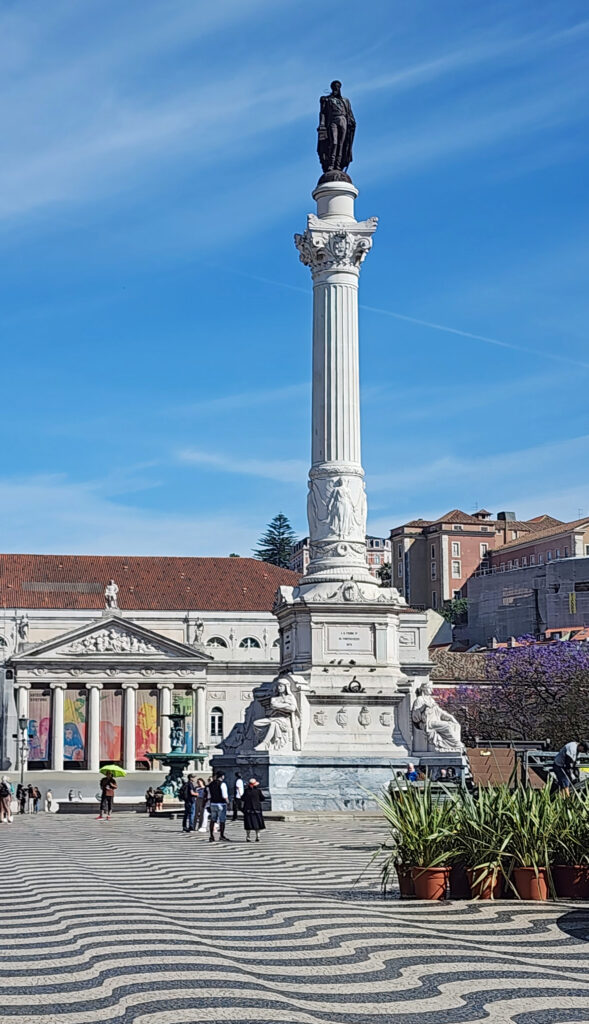
We explored the area around Rossio Square, including the nearby Praca dos Restauradores, which memorializes the restoration of a Portuguese monarchy separate from the Spanish monarchy in 1668, after a war that lasted 28 years. We also found the Rossio Train Station, from which we would take a train to Sintra the following day. We then made our way to the Santa Justa Elevator, which takes visitors up to the Bairro Alto section of the city. The elevator is itself a tourist attraction, though, and there was a crowd waiting to ride the elevator. We decided not to wait.
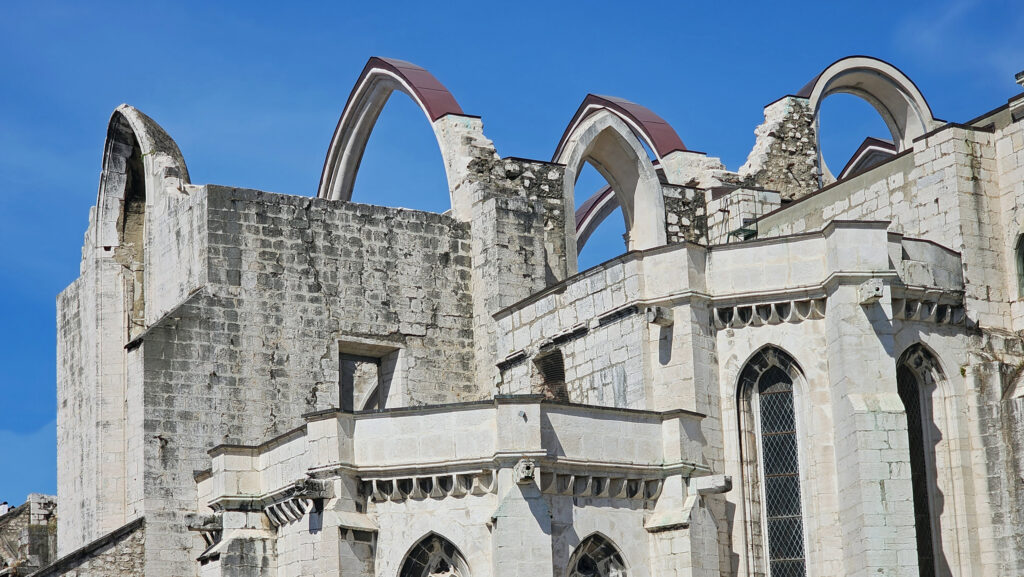
Nearby, we found a department store with a set of escalators and a fourth-floor exit onto an upper street behind the building. From there it was only a short uphill walk to the Archaeological Museum of Carmo (Museu Arqueológico do Carmo) and the ruins of the Carmo Convent that was destroyed by an earthquake in 1755.
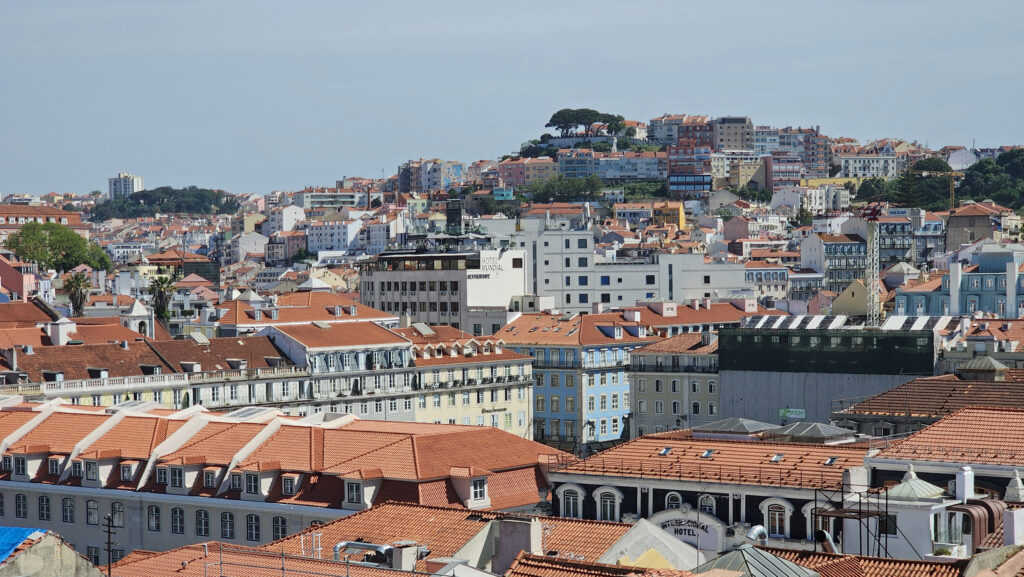
And from there we crossed a short bridge to the viewing platform at the top of the Santa Justa Elevator, which gives magnificent views across central Lisbon to the Sao Jorge Castle and to the Tagus River and beyond.
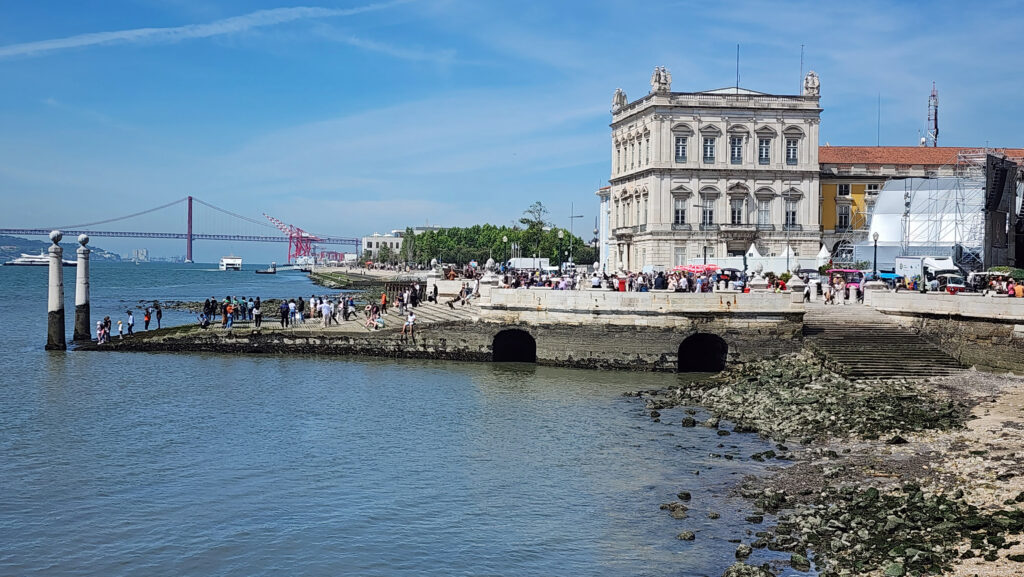
After taking in the views, we made our way down to the riverfront and the Praca do Comercio (Commerce Square) where crews were setting up for the Freedom Day celebrations (more on that below). From there we walked along the riverfront to the lower end of the Alfama district.
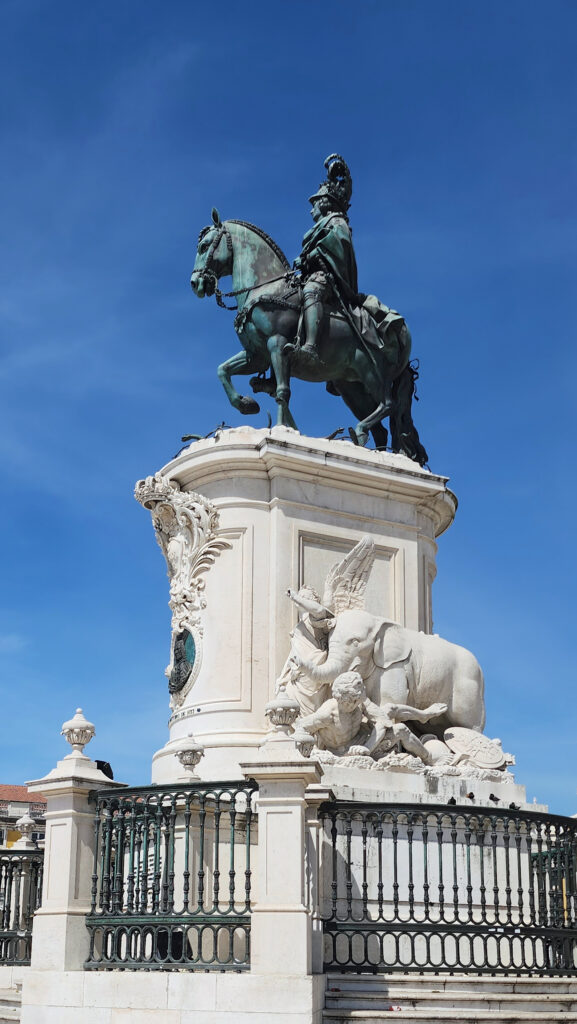
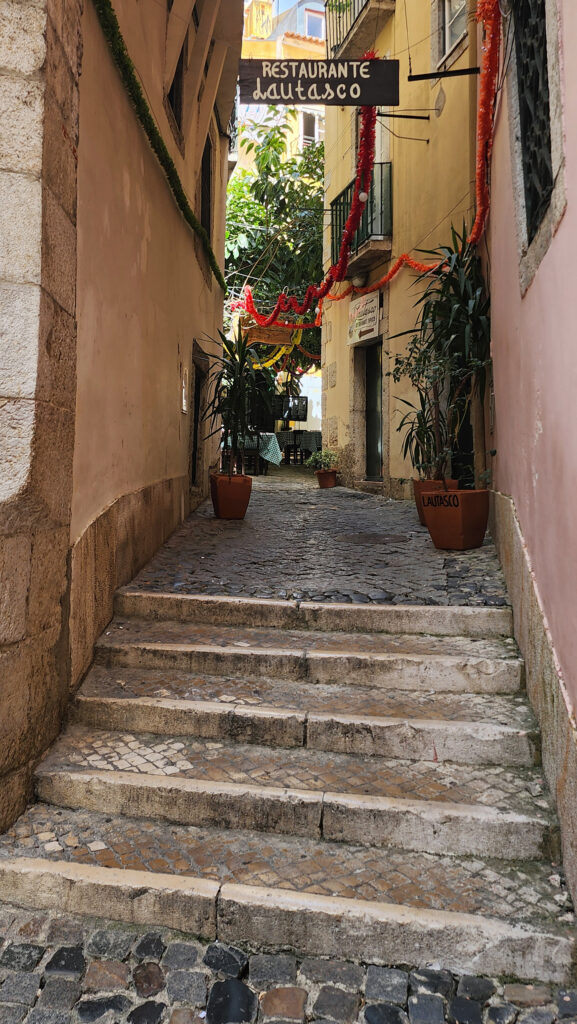
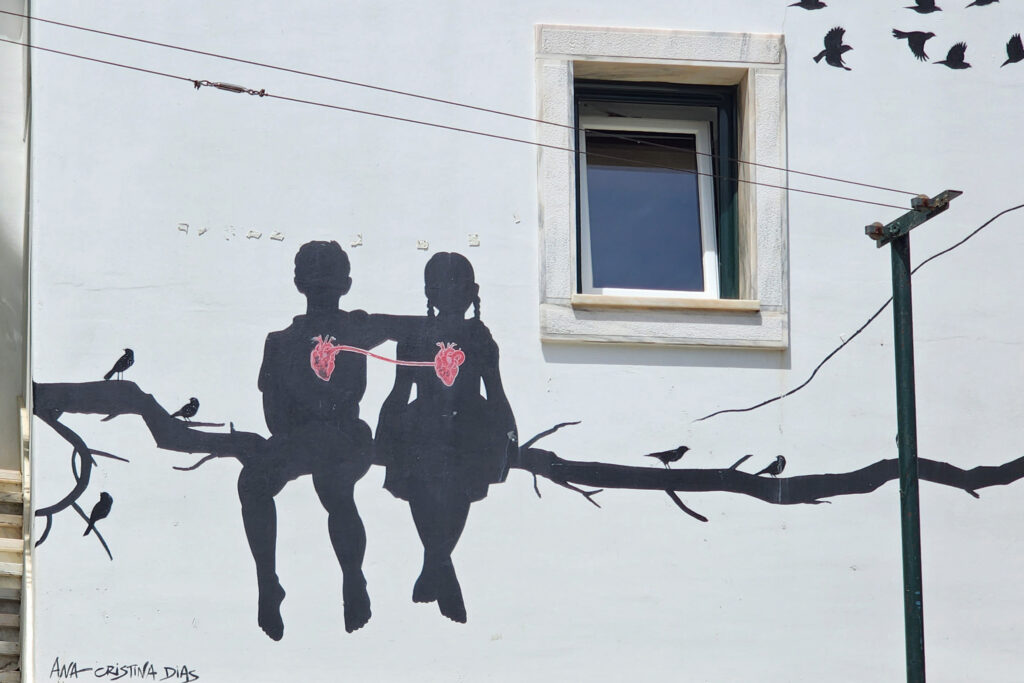
The Alfama is a hillside neighborhood of narrow, winding cobblestone streets and alleys. In the past it was a poorer, rougher area home to dockworkers and sailors, and not an area tourists would want to visit. But today it is an upscale area home to artisans, many shops and restaurants, quaint and picturesque homes, several large churches, and the National Pantheon (pictured in the featured image at the top of this post). And it is definitely a must see for everyone visiting the city.
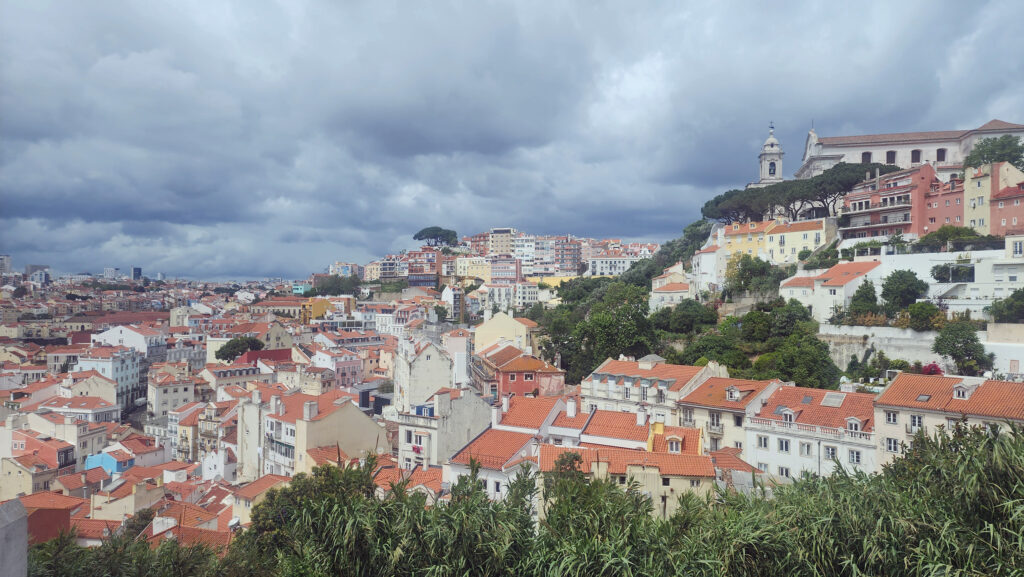
We stopped for lunch at a little restaurant that has a small outdoor courtyard seating area before wandering through the upper part of the Alfama and back to our hotel.
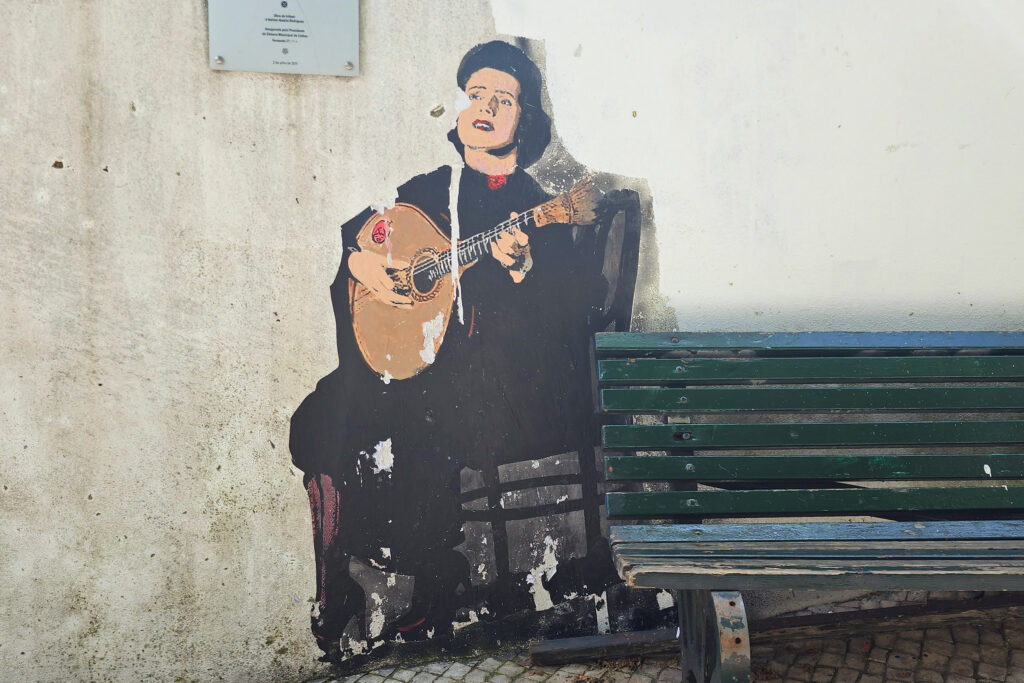
We had some trouble finding a place to eat that evening. The following day was Freedom Day and the partying was already well underway by then. Most of the restaurants near our hotel were already packed. We finally found an “artisanal” burger place with a few empty tables. The burgers weren’t that good, but we were just happy to get some food in our bellies after a long day on our feet. (We walked at least six miles that day, probably more).
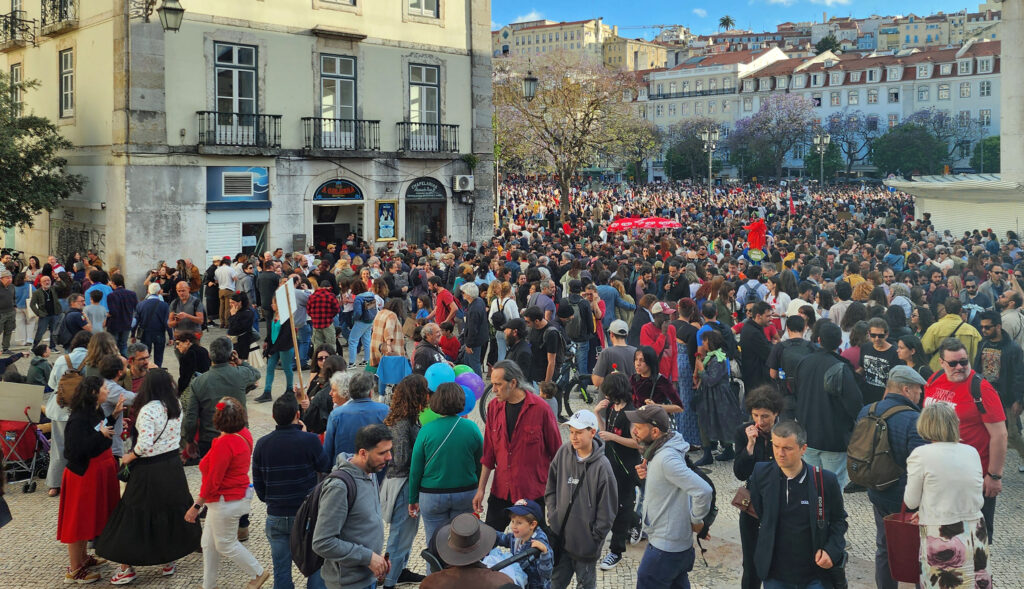
Freedom Day in Portugal celebrates the overthrow of the dictatorship in 1974. It was a bloodless military coup and is called the “carnation revolution” because soldiers marching in the streets placed carnations in the barrels of their guns in celebration. April the 25th is the equivalent of our 4th of July, and it is a very, very big thing in Portugal, as we found out, both that evening and the following day.
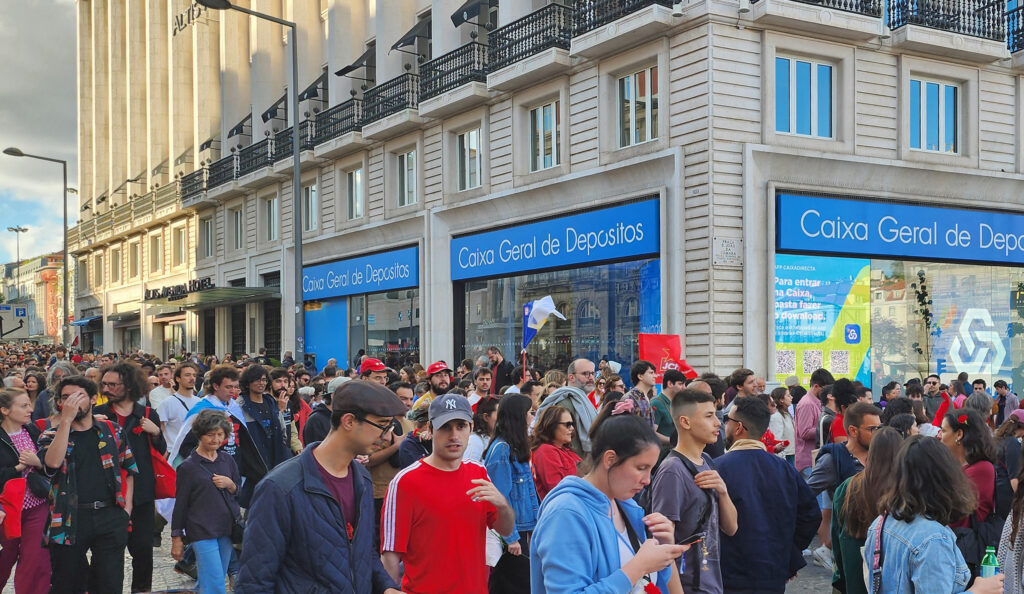
Our second full day in Lisbon was mostly taken up with a day trip to Sintra (which I’ll cover in an upcoming post), but when we returned to Lisbon that evening, we exited the Rossio Train Station into a parade or march filling the street in front of the station from curb to curb with a mass of people heading to Rossio Square, some carrying homemade signs. We had to make our way across the street to get back to our hotel, so we joined the crowd for a ways and pretended we were Lisboners celebrating our freedom. Great fun and wonderful to see that mass of humanity on the streets in celebration.
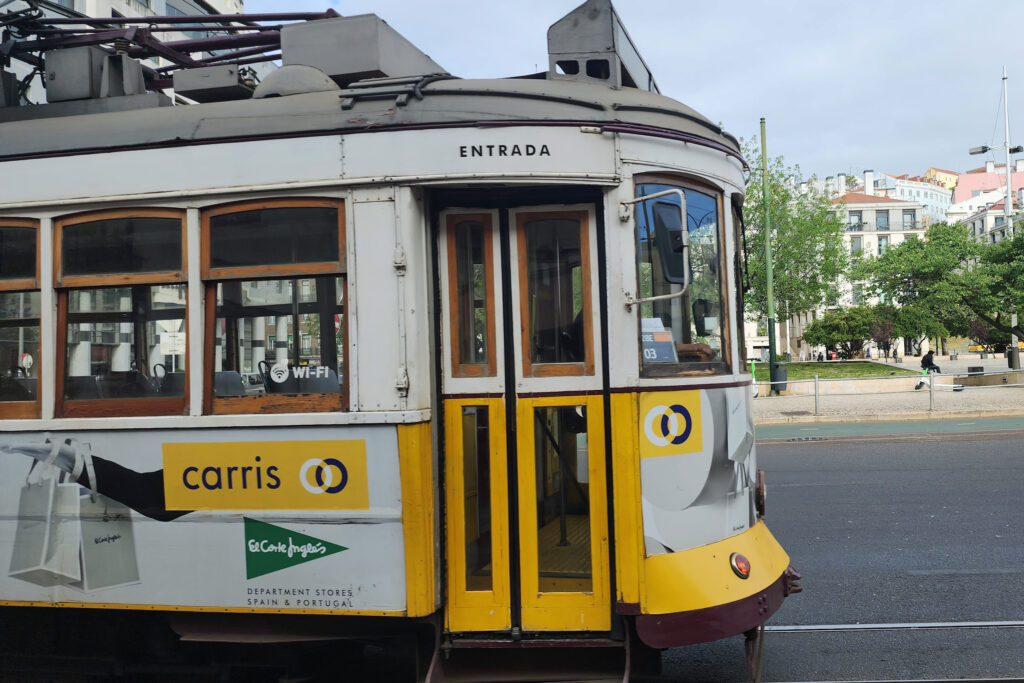
On our third and final full day in Lisbon we stopped at the closest Metro station to our hotel after breakfast and bought 24-hour passes, which cover both the Metro subway system and the surface tramway system (and local buses, too, I believe), then walked to Martin Moniz Square where we caught a ride on the famed Tram 28 (after a fairly long wait in line even though we got there early).
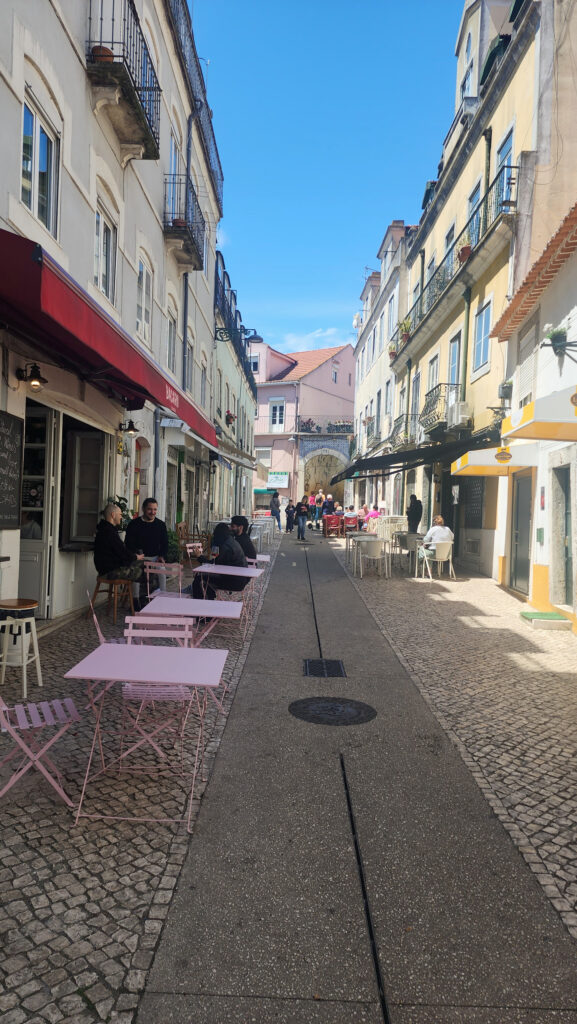
Tram 28 takes you up through the Alfama, across the Baixa (the central business district), through the Chiado and Bairro Alta sections of the city, and all the way to Campo de Ourique in the west end of Lisbon.
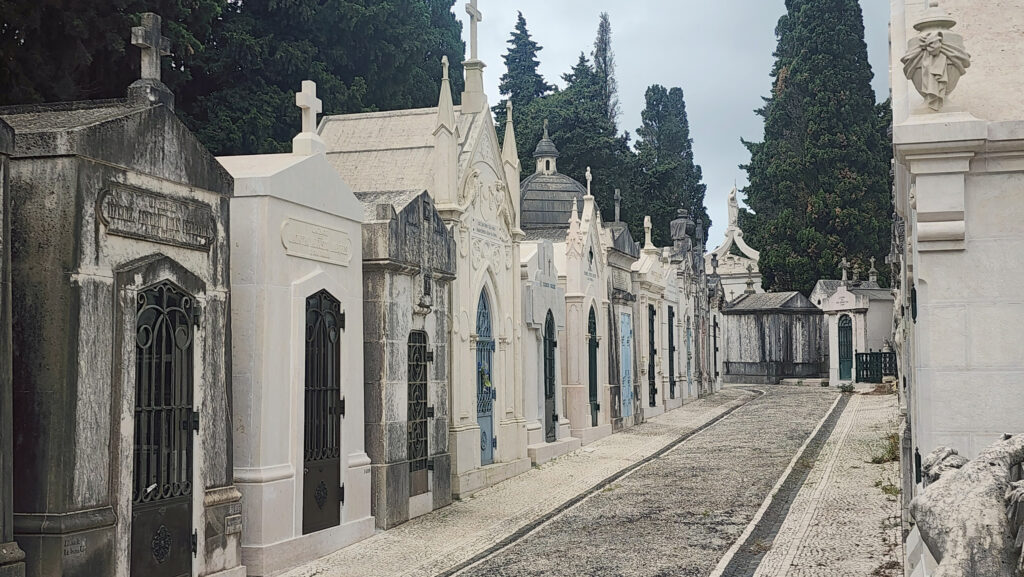
The turnaround point is the oddly named Cemetery of Pleasures (Cemiteria dos Prazeres). I think maybe something got lost in translation there. Anyway, it’s a huge above ground cemetery with thousands of family tombs, some of them large and ornate. Everyone has to get off the tram there, so we took some time to explore the cemetery before catching a later tram back to the center of the city.
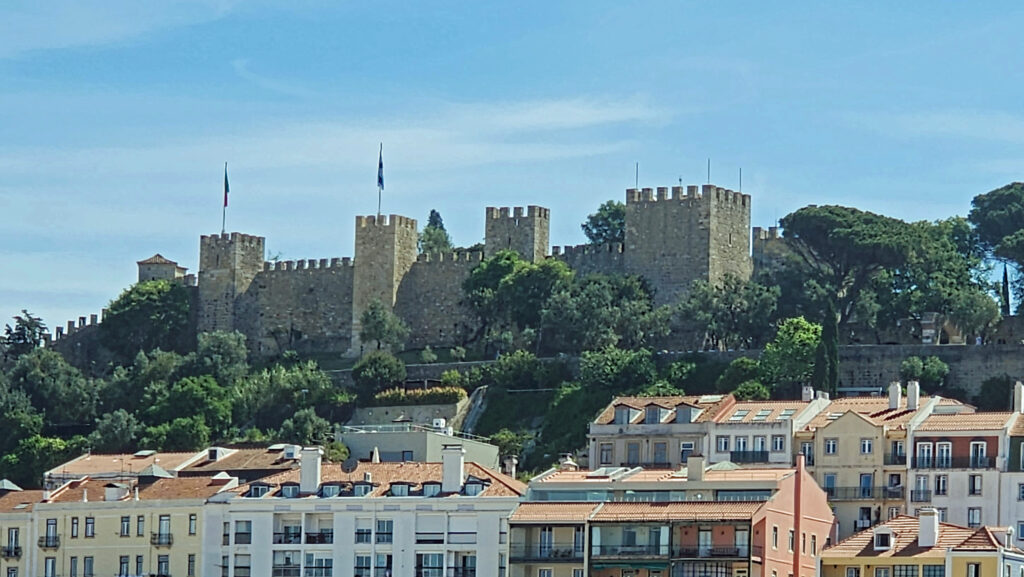
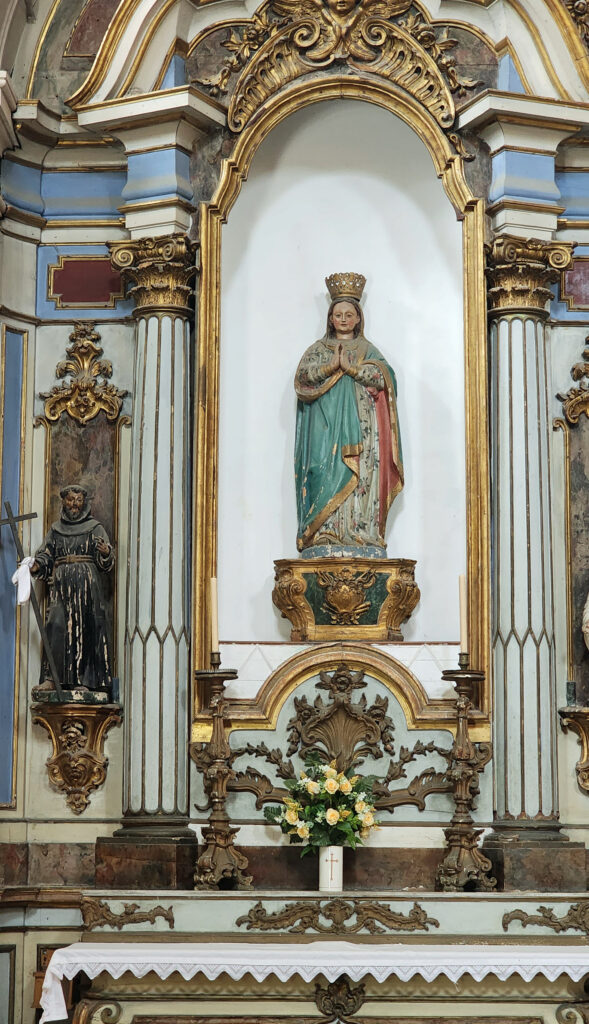
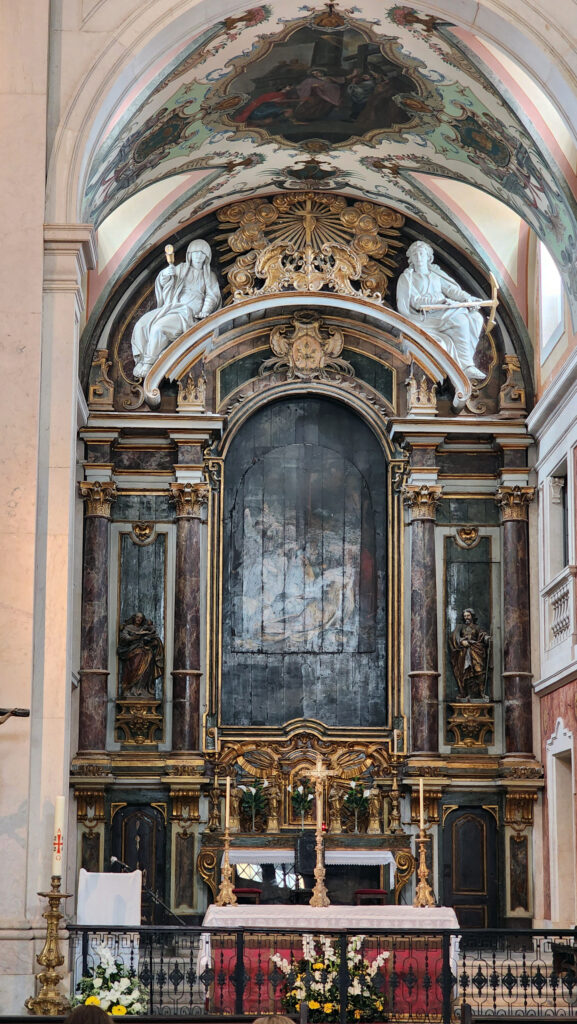
We got off the tram again in the Alfama. (With a 24-hour Metro pass, you can hop on and hop off the tram at will). After splitting a pizza for lunch at a little pizzeria, we walked up to Sao Jorge Castle, the high point of the Alfama. We spent a couple of hours touring the castle grounds and garden, the castle museum, and the chapel, then walked back down the hill to our hotel.
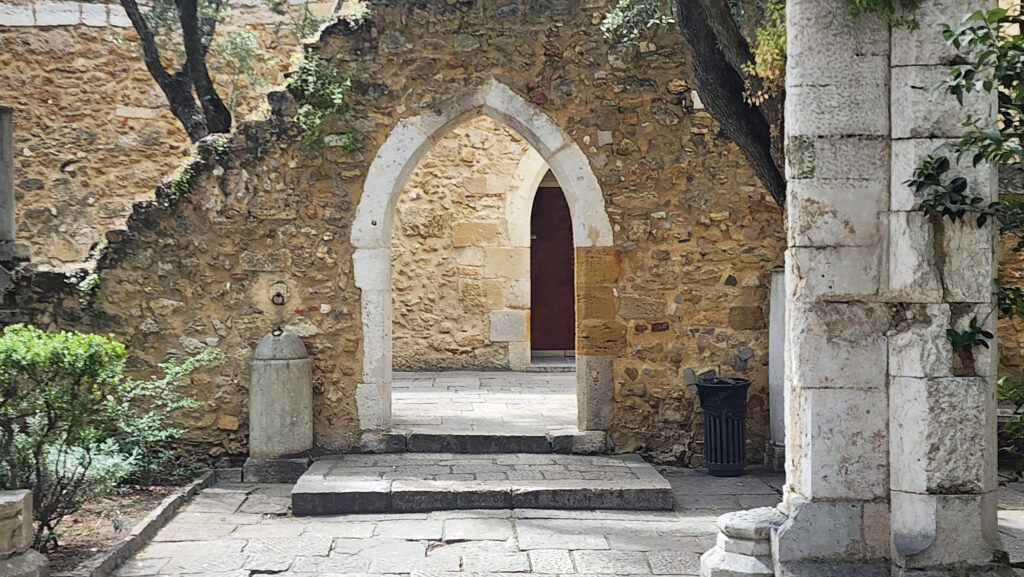
That evening, we had dinner and a couple of brews at Sputnik Brewing, two doors down from our hotel. We would have stopped in earlier, but the first two evenings the place was packed with Freedom Day celebrants, the crowd spilled out onto the sidewalk both nights, and we almost literally couldn’t have gotten in.
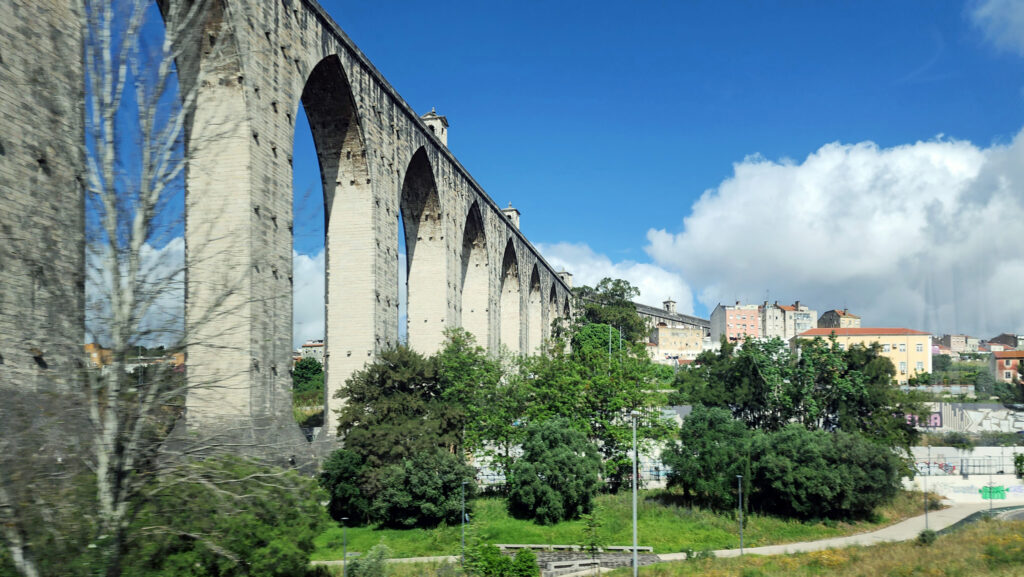
The following morning, we checked out of the hotel and rode the Metro (which is quick, clean, and safe) to the bus station where we caught a bus to Faro in the Algarve on the south coast of Portugal (look for a future post on our time there).

We had a great time in Lisbon and I’m glad we finally got to visit after five years of planning and waiting. Would we have done things differently if we had known what we do now? Probably. I think we would have skipped the day of wandering around on foot, and done the Tram 28 tour first, taking time to explore the Alfama and the castle in the morning, and exploring more of Bairro Alta in the afternoon. With the extra day, I think we would have gone to Belem, just west of Lisbon, and maybe to the seaside town of Cascais farther to the west. Taking a day trip to Sintra, as we did, is a must, though. I think if we were to do it again, we would stay an additional day or two. There is much to see in Lisbon that we didn’t have time for. You could easily spend five or six days (or longer) there and not run out of things to do. But as it was, we had a lot on our agenda for this trip, and didn’t have the time to linger in Lisbon. I’ll cover the rest of the trip in later posts.
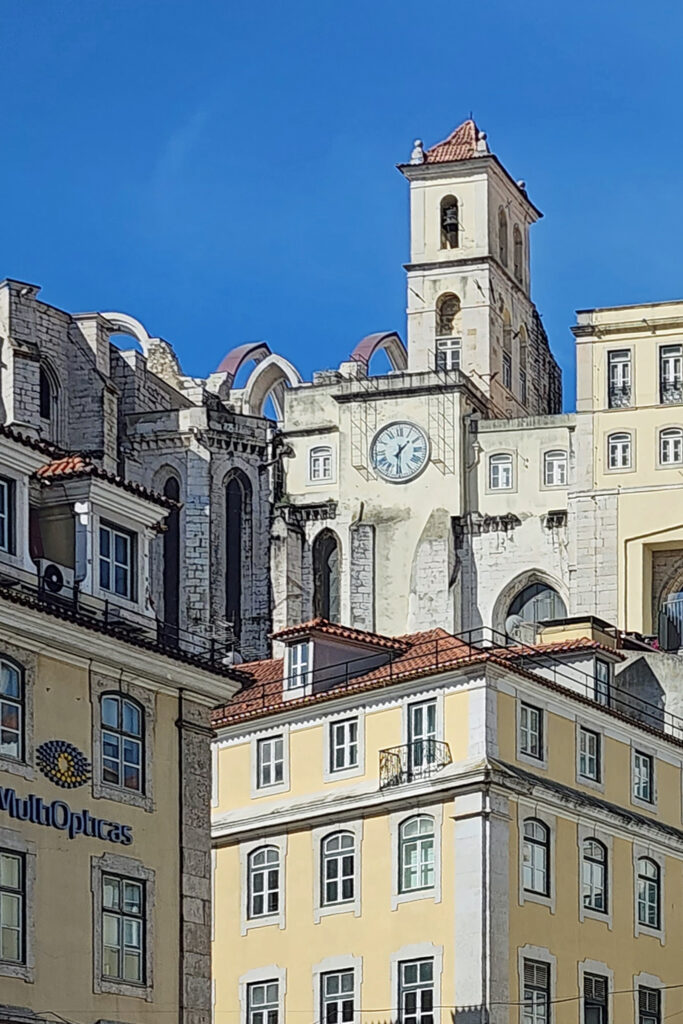
Posted June 6, 2024
All photos © Alan K. Lee

